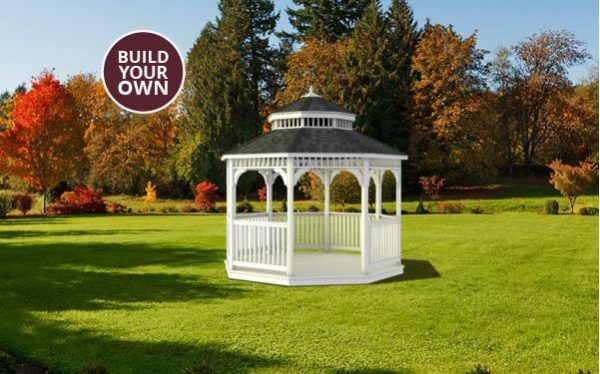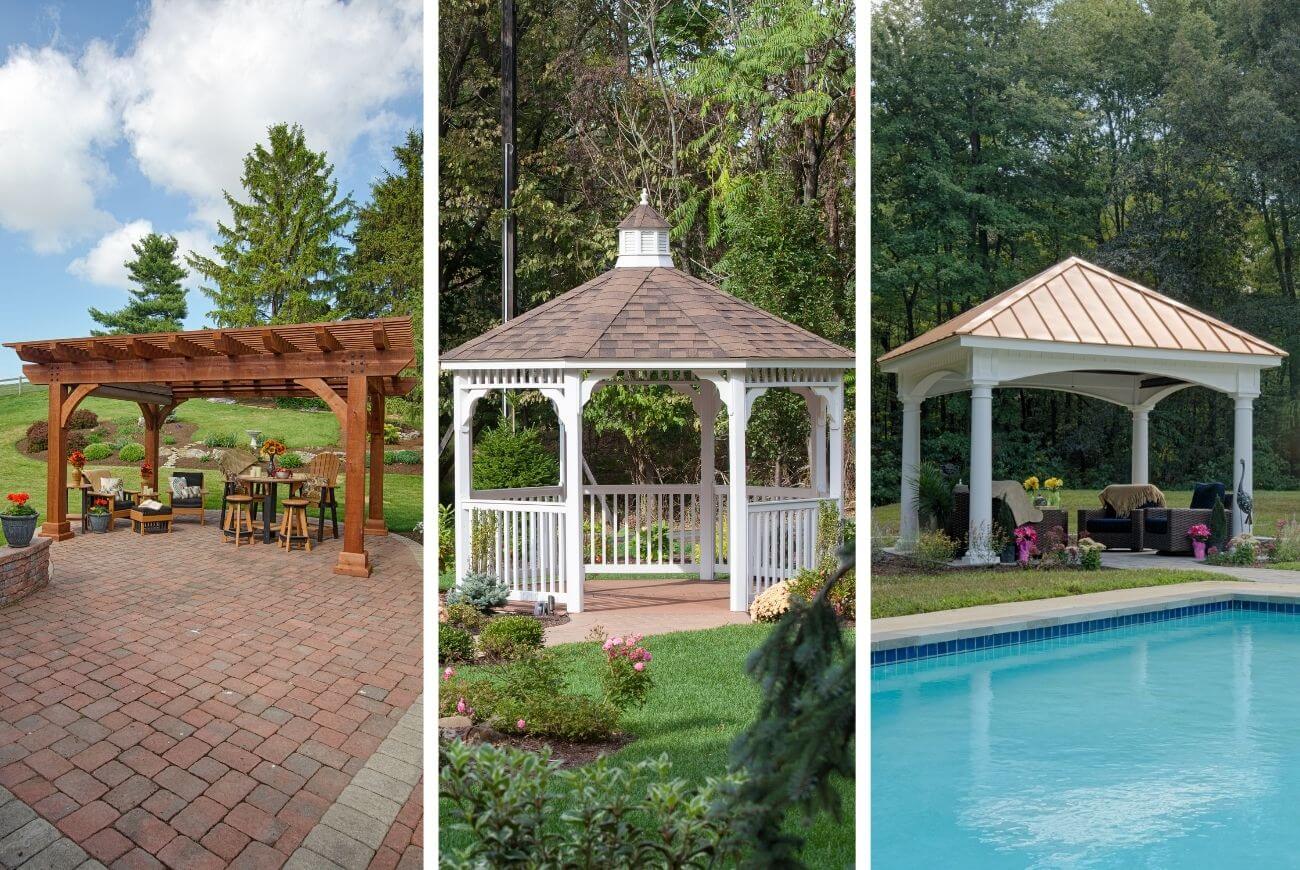
A bit of shade can make a world of difference on a hot day. And if you don’t have trees in your backyard, then you need an outdoor shade structure. But how do you decide between a pergola vs gazebo vs pavilion? We’re going to help you break down the differences between each one so you can transform your yard and stay cool this Summer.
Outdoor structures are our specialty. We build them. We deliver them. We install them. And we know the unique value each one has.
What is a Pergola?
Pergolas are a large outdoor shade structure featuring a lattice-style roof supported by several posts. They are great for separating outdoor spaces while creating a bit of shade. We love placing them over a patio, by a pool, or making unique outdoor areas like a kitchen pergola! You can also attach it to the side of your house to hang over your deck or hot tub.
Their lattice roof and open sides provide some sun protection while still letting air circulate. You can also hang plants, lights, and other decorations for a quaint oasis right in your own backyard. For more privacy, we suggest adding an EZ Shade curtain or canopy.
Pergolas come in a variety of design styles. You can choose wood or vinyl and can customize the color, post style, and roof shape.
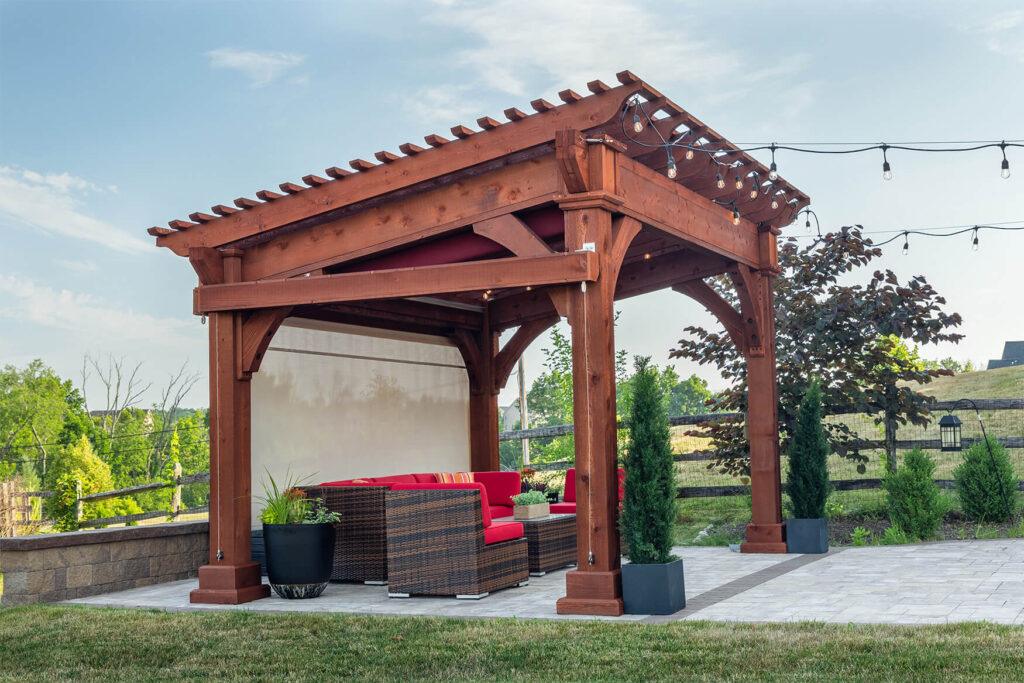
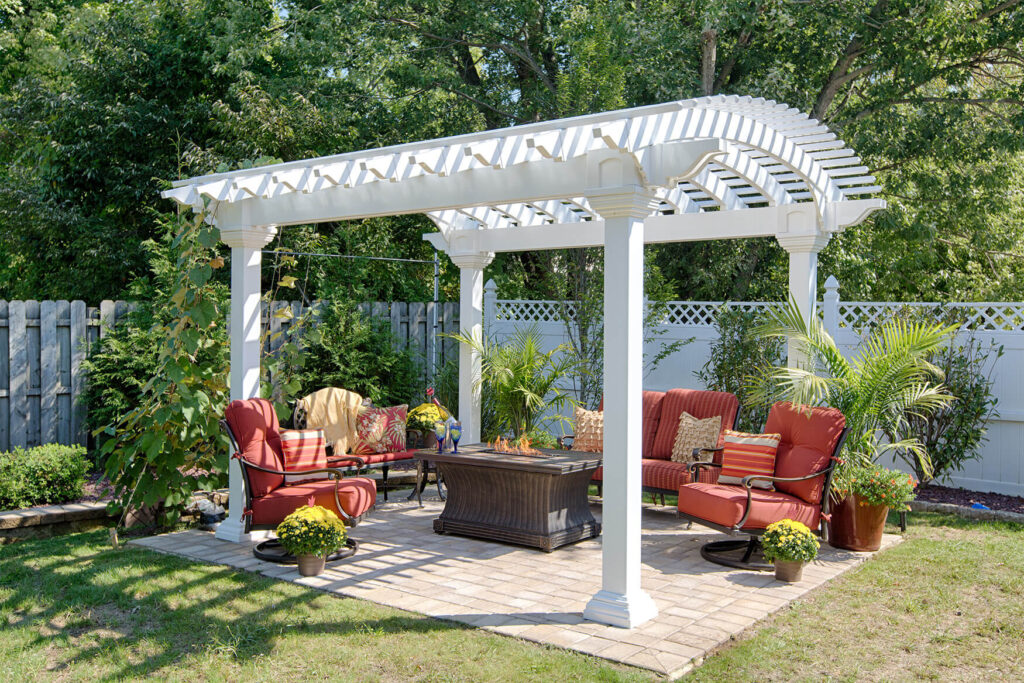
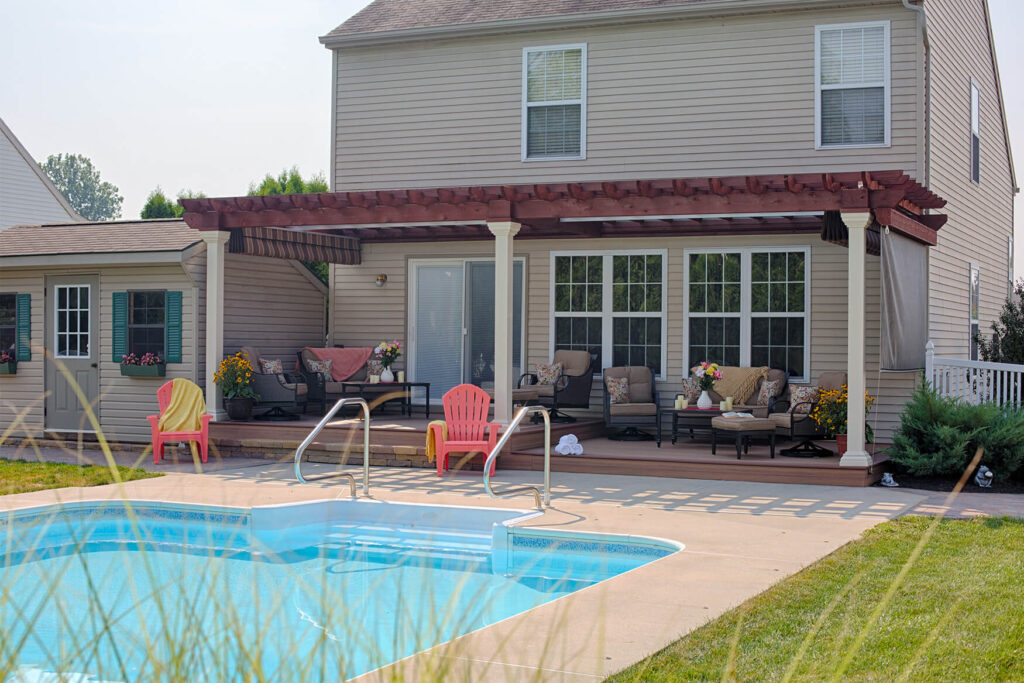
Benefits of a Pergola
- Lattice roof allows for more light and air circulation
- Cheaper than a gazebo or pavilion
- Can be traditional or more modern
- Easier to clean and maintain
- Open sides release heat
- Can be freestanding or attached to your home
- More decorating options (hanging plants, lights, and climbing vines)
What is a Gazebo?
Gazebos are freestanding structures with a solid roof that’s either pitched or tiered. They have partially open sides, often surrounded by a railing, and some are even screened in to keep out bugs! Some gazebos have a built-in floor, while others are placed on a concrete base. When comparing a pergola vs gazebo, the biggest clue is the shape. Gazebos are typically octagon or oval, but there are some rectangular designs as well.
Gazebos are the perfect backyard centerpiece and can be decorated for outdoor celebrations like reunions and weddings. They offer lots of shade in a sunny yard and can add a classic architectural element to an otherwise empty landscape.
We offer wood and vinyl gazebos in various shapes, sizes, and colors. You can customize the flooring, railing, shingles, braces, and roof style.
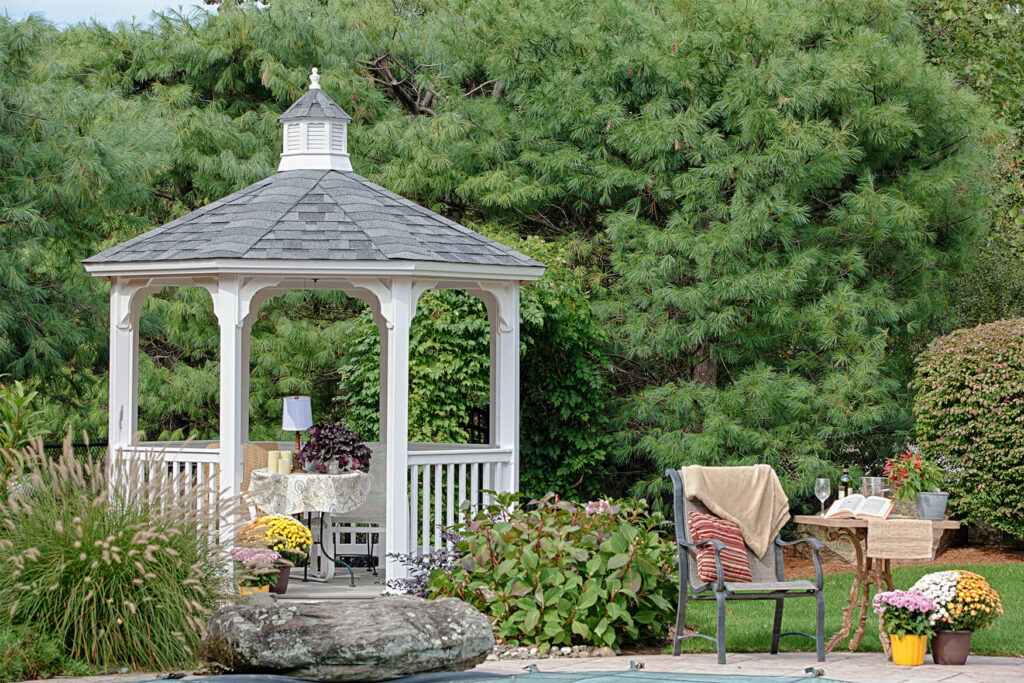
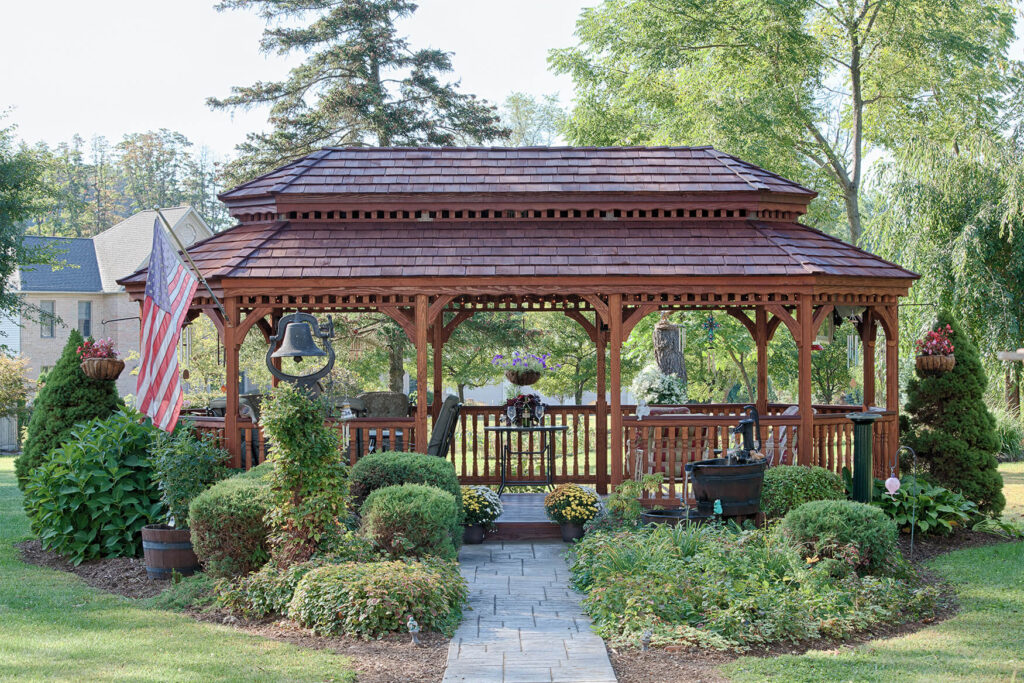
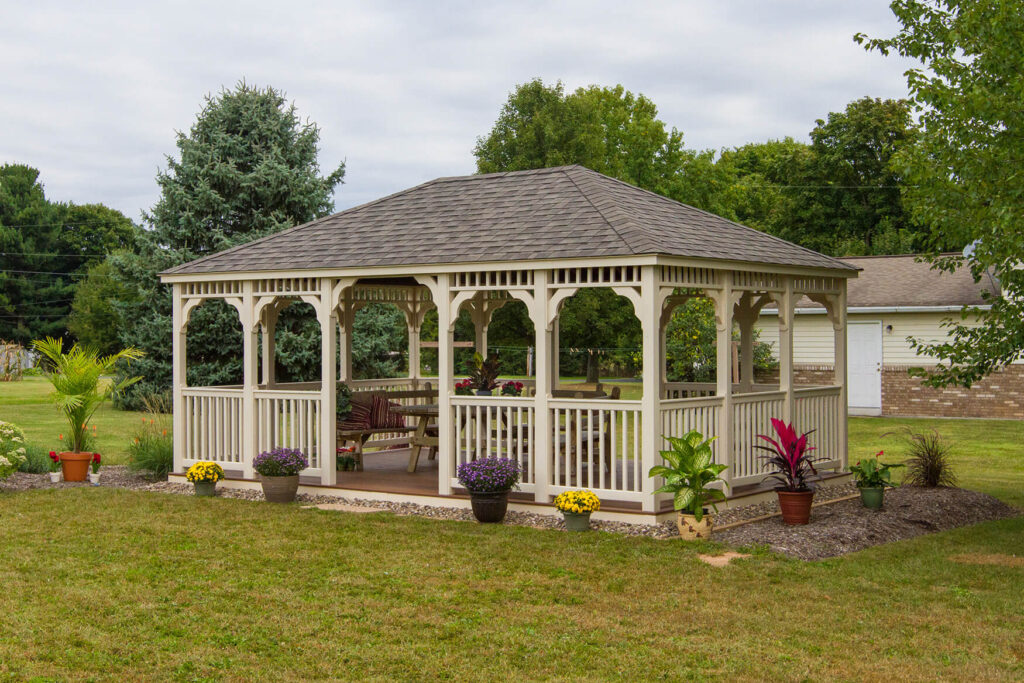
Benefits of a Gazebo
- Enclosed structure that blocks the elements
- Full sun protection
- Good for hosting events
- Variety in size and shape
- Traditional look
- Provides a cozy escape
What is a Pavilion?
Unlike a gazebo, a pavilion is a roofed structure with open sides and no built-in floor. The roof is typically supported by 4–8 posts, depending on the size, and they are commonly attached to a deck, patio, or concrete base. While many gazebos are octagonal or oval, most pavilions are long and rectangular. They are a good option if you want to keep the eye line clear across your landscape.
Pavilions are commonly used to provide a cover for a patio or seating area below. The key difference between a pavilion vs pergola is the roof. Pergolas have a roof made of open slats, while pavilions have a completely solid roof. This offers full sun protection and keeps out the rain. Pavilions also tend to be larger, used for entertaining or outdoor living areas, while pergolas are smaller and more decorative.
These structures come in wood or vinyl varieties, with either a flat or steeped roof. You can customize the paint, stain, and shingle colors, and add a canopy or curtain to maintain privacy.
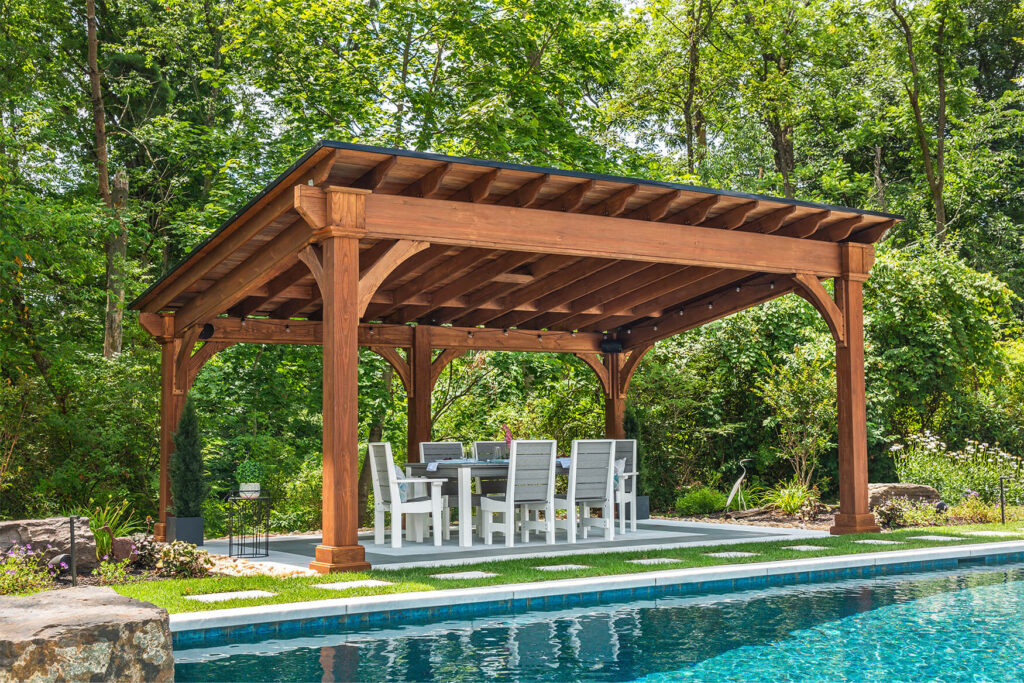
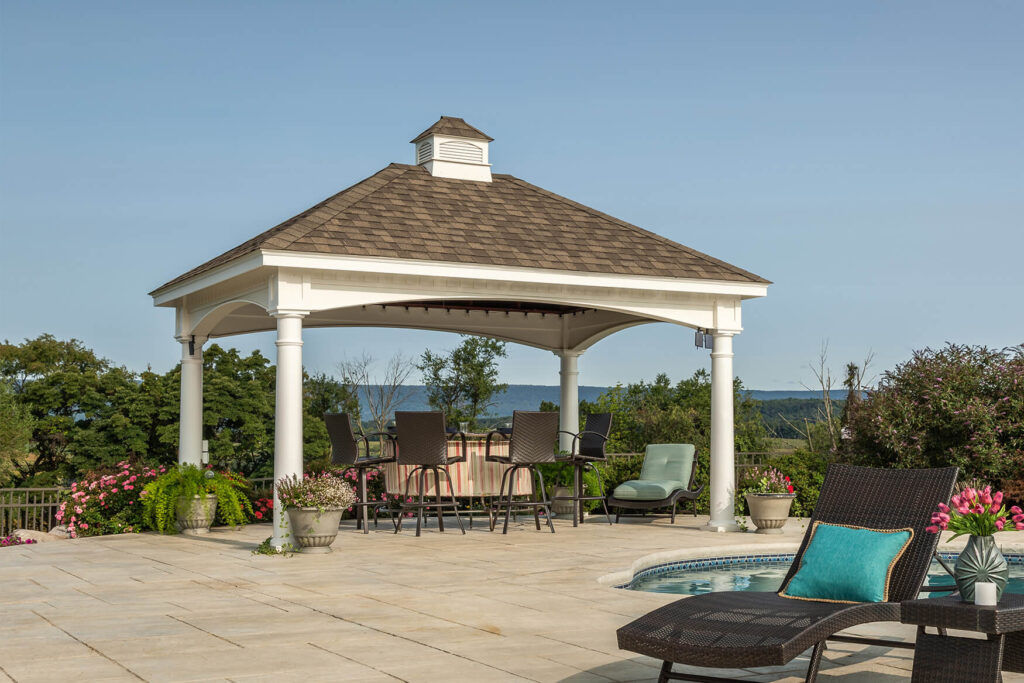
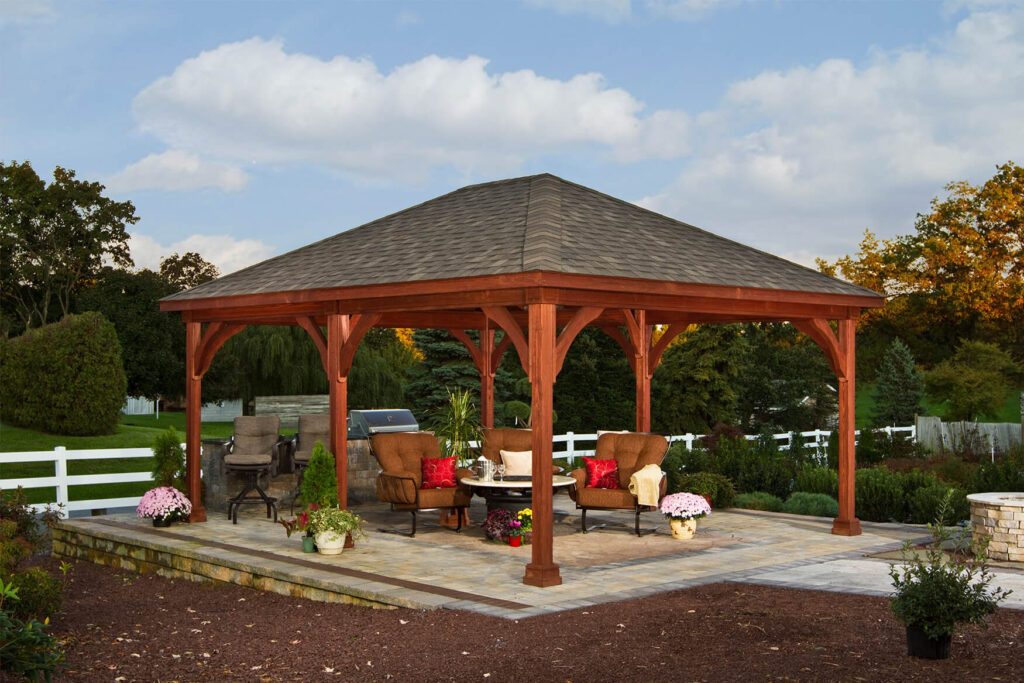
Benefits of a Pavilion
- Provides a patio roof that blocks rain
- Full sun protection
- More air movement
- Variety in size options
- Good for backyards, parks, churches, and pools
- Open sides release heat
Key Takeaways: Pergola vs Gazebo vs Pavilion
Still deciding between the different permanent outdoor shade structures? Here’s a summary of the twelve key differences to help you pick between a pergola vs gazebo vs pavilion.
- ROOF: Pergolas have a lattice roof, while pavilions and gazebos have a completely solid roof.
- SIDES: Pergolas and pavilions are open, while gazebos are a semi-enclosed structure that can be screened in.
- SHAPE: Pergolas and pavilions are rectangular, while gazebos come in a variety of shapes such as oval, octagon, dodecagon, and rectangle.
- LOCATION: Pavilions and pergolas can hang over your patio, deck, pool, hot tub, or fireplace. They can even be attached to the side of your house. Gazebos are self-contained structures that sit away from your home.
- USE: Pavilions and pergolas add a patio roof and elevate your outdoor area. Gazebos are good for celebrations and offer a private escape.
- MAINTENANCE: Pergolas are easier to clean because the rain washes dirt away, while gazebos and pavilions require more work.
- HEAT: Gazebos trap heat (unless you use a vented cupola), while pergolas and pavilions release heat.
- LIGHT: Pergolas let in more sun, but gazebos and pavilions offer full shade.
- WEATHER: Gazebos and pavilions can block rain, but pergolas don’t offer the same protection.
- AESTHETICS: Gazebos are a classic design choice, while pergolas and pavilions can be more trendy and modern.
- DECOR: Pergolas’ lattice roofs let you grow plants or weave lights throughout the structure. Gazebos and pavilions have more limited decor options.
- PRICE: Pergolas tend to be cheaper since they are a simpler structure with less building materials.
Picking between a pergola vs gazebo vs pavilion depends on several factors. How will you be using it? Where do you want to place it? What design features matter to you? The good news is, all three are versatile options that will add charm and character to your home, so you can’t go wrong!
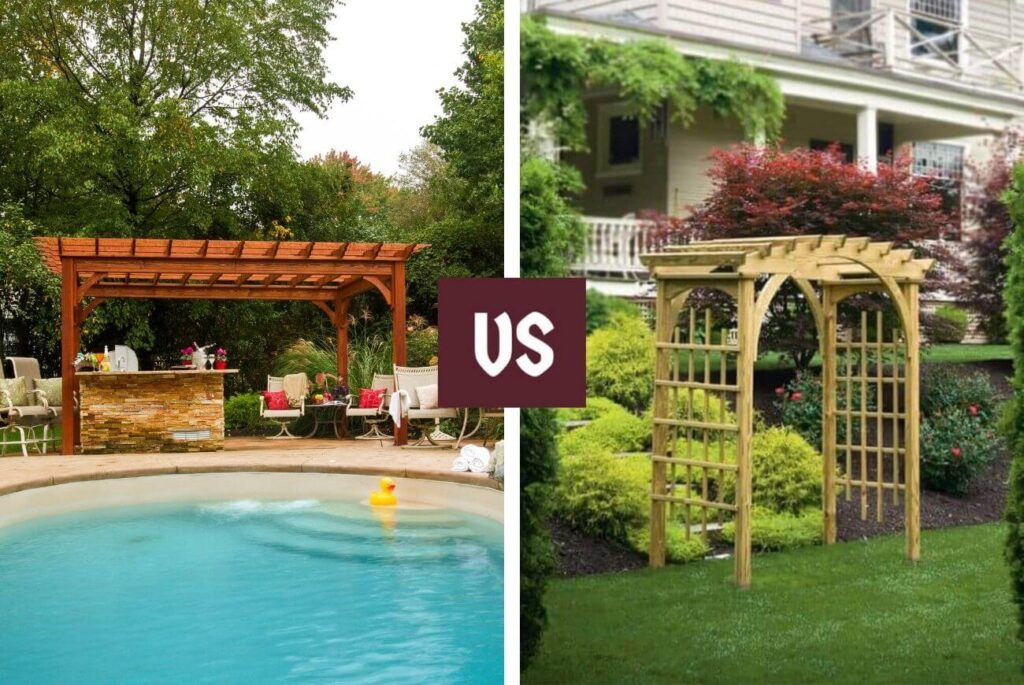
Related Questions
1). What’s the difference between pergolas and arbors?
Both structures are designed with a lattice framework, but they have several distinct differences. Arbors have lattice sides with an arched top. They are used as decor along walkways or to designate the entry point into a garden or backyard. Pergolas are much larger structures that have a lattice roof, and are used to cover a patio or outdoor area.
2). What is the difference between pergolas and gazebos?
Gazebos feature fully enclosed, solid roofs that provide complete weather protection, whereas pergolas have open, slatted roofs designed to allow partial shade and airflow.
3). Do outdoor structures need to be anchored?
Yes, all outdoor structures should be anchored to the ground, especially if you live in an area with frequent hurricanes or high winds. This helps improve the safety and stability of your structure so it lasts for years to come. Pergolas and pavilions do not come with a built-in base, so you need to attach the posts to a concrete foundation or continuous post footings to keep your structure in place.
4). How do I prepare my site for a structure?
All large structures—including pergolas, pavilions, and gazebos—need a base beneath. This can be a deck, patio, or concrete slab, as long as it’s solid and level. We suggest working with Bedrock Siteworks to install a quality foundation for your structure. They offer site prep, stone base, and concrete foundations. For more details, read our guide on how to prepare your site for a new structure.
5). Do I need a permit for my pergola, pavilion, or gazebo?
Yes, it’s likely that you will need a permit. However, the specific requirements depend on where you live and the size of your structure. Check with your local municipality and HOA to find what permits are needed.
Have more questions? Explore our FAQ page or contact our backyard experts.
Just The Way You Like It
Customize your outdoor shade structure using our virtual “Build Your Own” tool. Make design selections, see what it’ll look like in real time, and request a quote based on your choices. It’s that easy.
